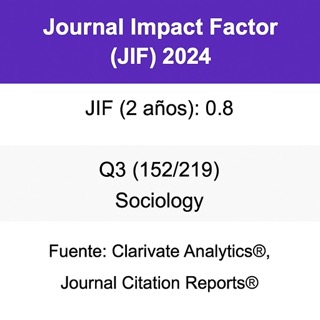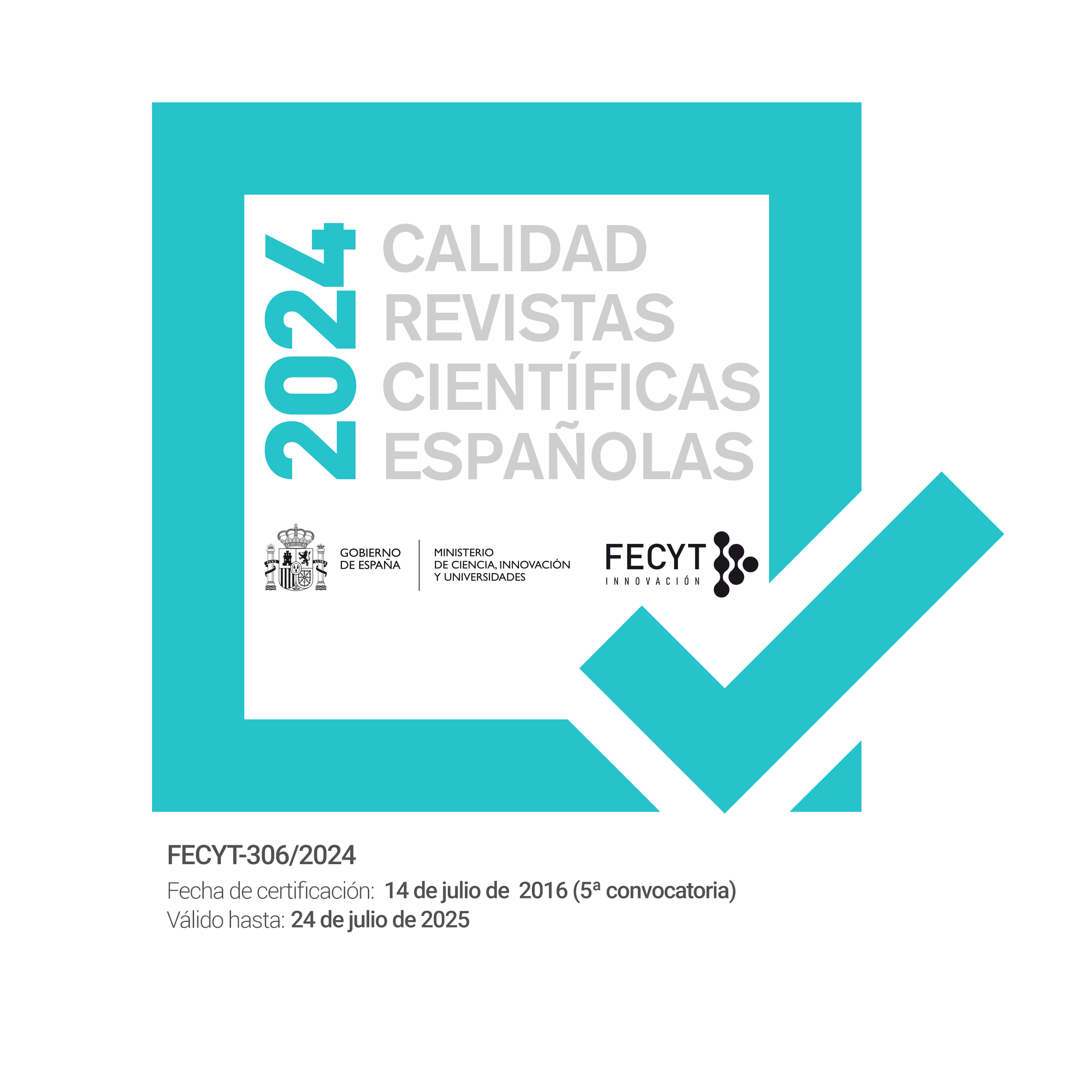Buenas prácticas e innovación educativa para la mejora del bienestar de los niños migrantes y refugiados. Perspectivas del proyecto de investigación IMMERSE H2020
DOI:
https://doi.org/10.22325/fes/res.2024.212Palabras clave:
buenas prácticas, niños migrantes, niños refugiados, innovación educativa, inclusiónResumen
La noción de buena práctica designa una solución innovadora y creativa diseñada para mejorar las condiciones de vida -y en consecuencia el bienestar- de individuos y comunidades. Sin embargo, este concepto depende en gran medida del contexto. De hecho, se puede decir que un proyecto, proceso o resultado es “bueno” o “innovador” solo en relación con un contexto específico y con su capacidad para responder a una necesidad específica. En este caso, la necesidad de adoptar y adaptar una buena práctica desarrollada en otro lugar en un nuevo contexto debe abordarse caso por caso. Este artículo presenta la metodología utilizada para analizar las buenas prácticas recogidas a nivel europeo en el proyecto de investigación IMMERSE Horizonte 2020. En el estudio se han combinado los principales indicadores de integración de niños migrantes y refugiados y los requisitos tradicionales de identificación de una buena práctica (eficacia, eficiencia y transferibilidad). Por último, en este artículo también se ofrece una evaluación empírica para resaltar y analizar algunas de las iniciativas más relevantes que se han identificado con el fin de proponer un conjunto de recomendaciones políticas con el objetivo de aumentar el bienestar y así promover caminos exitosos para la integración de los niños migrantes y refugiados.
Citas
Bäckman, E., & Trafford, B. (2007). Democratic governance of schools. Council of Europe Publishing.
Bear, G. G. (2020). Improving school climate: Practical strategies to reduce behavior problems and promote social and emotional learning. Routledge.
Benadusi, L., & Consoli, F. (2004). La governance della scuola: istituzioni e soggetti alla prova dell’autonomia. Il Mulino.
Brown, E. L., & Krŭsteva, A. (Eds.). (2013). Migrants and refugees: equitable education for displaced populations. Information Age Publishing.
Fabretti, V., Gigliotti, M., Lonardi, M., & Taviani, S. (2022). Collection of Good Practices at the National and EU level. In D4.1. https://www.immerse-h2020.eu/wp-content/uploads/2022/08/IMMERSE_D4.1_Extended.pdf
Fernández García, M., Serrano Sanguilinda, I., Fabretti, V., Taviani, S., Ordóñez Carabaño, Á., Bajo Marcos, E., & Rodríguez-Ventosa Herrera, E. (2019). Report on intercultural competences and multiligualism regarding research on refugee and migrant children integration. In D1.2. https://ec.europa.eu/research/participants/documents/downloadPublic?documentIds=080166e5cf41645a&appId=PPGMS
Fernández García, M., Serrano Sanguilinda, I., Fabretti, V., Taviani, S., Ordóñez Carabaño, Á., Bajo Marcos, E., Rodríguez-Ventosa Herrera, E., Martin, S., O’Riordan, J., Horgan, D., Maier, R., Marouda, M. D., Rutzen, A., & Ramadan, A. (2020). IMMERSE Dashboard. In D1.5. https://www.immerse-h2020.eu/dashboard-of-socio-educational-integration-indicators/
Fisher, L., Evans, M., Forbes, K., Gayton, A., & Liu, Y. (2018). Participative multilingual identity construction in the languages classroom: a multi-theoretical conceptualisation. International Journal of Multilingualism, 17(4), 448-466. https://doi.org/10.1080/14790718.2018.1524896
Godin, B., & Vinck, D. (2017). Introduction: innovation – from the forbidden to a cliché. In B. Godin, & D. Vinck (Eds.), Critical Studies of Innovation (pp. 1–14). Edward Elgar Publishing. https://doi.org/10.4337/9781785367229.00007
Herzog-Punzenberger, B. (2016). Successful integration of migrant children in EU member states: examples of good practice. NESET. https://nesetweb.eu/en/resources/library/successful-integration-of-migrant-children-in-eu-member-states/
Hubert, A. (2010). Empowering people, driving change: Social innovation in the European Union. https://ec.europa.eu/migrant-integration/sites/default/files/2011-01/docl_17731_35611801.pdf
Licardo, M. (2020). Implementing good practices with migrant children in preschool education in Slovenia. In Clicked: Culture, Language, Inclusion, Competencies, Knowledge, Education: Diverse Approaches and National Perspectives in the Field of Primary and Pre-Primary Education (pp. 57-68). University Press University of Sopron.
Moulaert, F. (2010). Social innovation and community development: concepts, theories and challenges. In F. Moulaert, E. Swyngedouw, F. Martinelli, & S. Gonzalez (Eds.), Can neighbourhoods save the city? (pp. 20-32). Routledge.
Moulaert, F., Mehmood, A., MacCallum, D., & Leubolt, B. (2017). Social innovation as a trigger for transformations-the role of research. Publications Office of the European Union.
Mulgan, G. (2006). The Process of Social Innovation. Innovations: Technology, Governance, Globalization, 1(2), 145-162. https://doi.org/10.1162/itgg.2006.1.2.145
Ongini, V. (2019). Grammatica dell’integrazione: italiani e stranieri a scuola insieme. Laterza.
Oosterlynck, S., Kazepov, Y., Novy, A., Cools, P., Barberis, E., Wukovitsch, F., Sarius, T., & Leubolt, B. (2013). The butterfly and the elephant: local social innovation, the welfare state and new poverty dynamics. In Poverty Reduction in Europe: Social Policy and Innovation (Vol. 13, Issue 3). Herman Deleeck Centre for Social Policy, University of Antwerp.
Peris-Ortiz, M., Gomez, J. A., & Marquez, P. (2018). Strategies and Best Practices in Social Innovation: An Overview. In M. Peris-Ortiz, J. A. Gómez, & P. Marquez (Eds.), Strategies and Best Practices in Social Innovation. An Institutional Perspective (pp. 1-10). Springer.Rosser Limiñana, A., & Juana Espinosa, S. A. de. (2019). European good practices on inclusion of migrant and Roma children in schools. PEOPLE: International Journal of Social Sciences 5(2), 700-711. https://doi.org/10.20319/pijss.2019.52.700711
Schaefer, D., Coates, G., & Eckert, C. (Eds.). (2019). Design Education Today: Technical Contexts, Programs and Best Practices. Springer.
Serdyukov, P. (2017). Innovation in education: what works, what doesn’t, and what to do about it? Journal of Research in Innovative Teaching & Learning, 10(1), 4-33. https://doi.org/10.1108/JRIT-10-2016-0007
Serrano Sanguilinda, I., Fernández García, M., Ordóñez Carabaño, Á., Bajo Marcos, E., & Miguel Somavilla, S. (2019). Common Conceptual Framework. https://ec.europa.eu/research/participants/documents/downloadPublic?documentIds=080166e5cf416458&appId=PPGMS
Tarman, B. (2016). Innovation and education. Research in Social Sciences and Technology, 1(1), 77-97.
Tracey, P., Phillips, N., & Jarvis, O. (2011). Bridging Institutional Entrepreneurship and the Creation of New Organizational Forms: A Multilevel Model. Organization Science, 22(1), 60-80. https://doi.org/10.1287/orsc.1090.0522
Valero, D. E., & López Marco, L. (2019). Interdisciplinariedad en la innovación social frente a la despoblación rural. Economía Agraria y Recursos Naturales, 19(1), 17-36. https://doi.org/10.7201/earn.2019.01.02
Van Rensburg, N. J., Meyer, J., & Nel, H. (2016). Social innovation, research and community engagement: Managing interdisciplinary projects for societal change. 2016 IEEE International Conference on Industrial Engineering and Engineering Management (IEEM), 1785-1789.
Zuber, M. (2017). The protection of children in migration. Emerging issues and ways forward. Migrant Children and Young People – Social Inclusion and Transition to Adulthood. https://doi.org/10.1063/pt.6.6.20170627a
Descargas
Publicado
Cómo citar
Número
Sección
Licencia
Derechos de autor 2024 Valeria Fabretti, Ángela Ordónez-Carabaño, Michela Lonardi, Silvia Taviani

Esta obra está bajo una licencia internacional Creative Commons Atribución-NoComercial 4.0.
Todas las publicaciones de la Revista Española de Sociología se realizarán bajo una licencia abierta Creative Commons de Reconocimiento 4.0 Internacional (CC BY 4.0). Dicha licencia establece que los autores son los poseedores de los derechos de propiedad intelectual de sus trabajos, que pueden redistribuirse a cambio de un reconocimiento adecuado. Para más información de la licencia Creative Commons, consultar aquí.
Una vez aceptado un artículo para su publicación, la Revista Española de Sociología solicitará al denominado "autor para la correspondencia" la aceptación de una licencia obligatoria Creative Commons incluida en un acuerdo o contrato de publicación.




